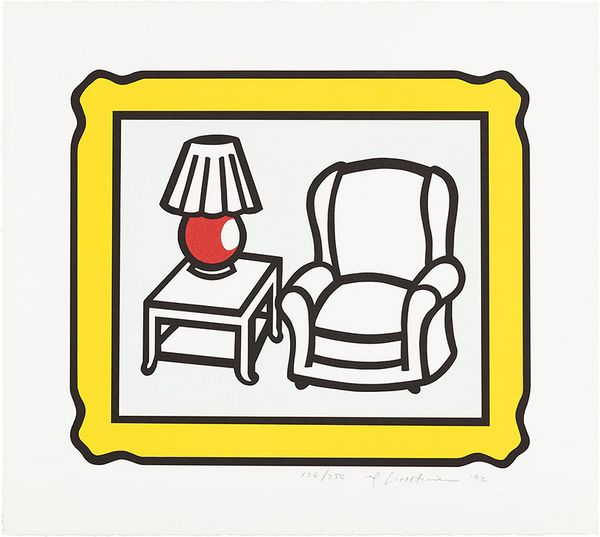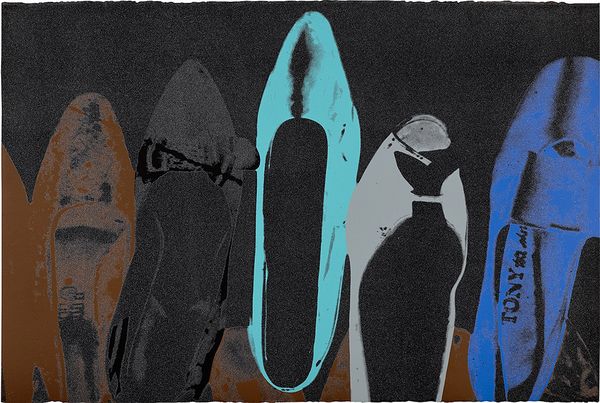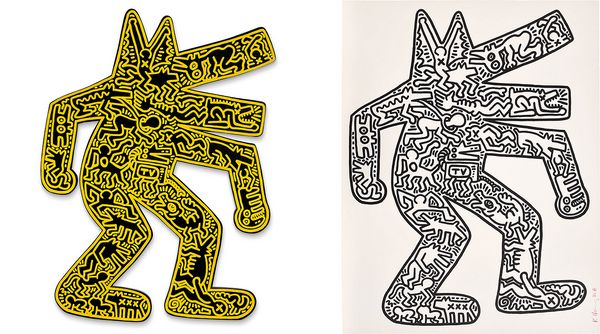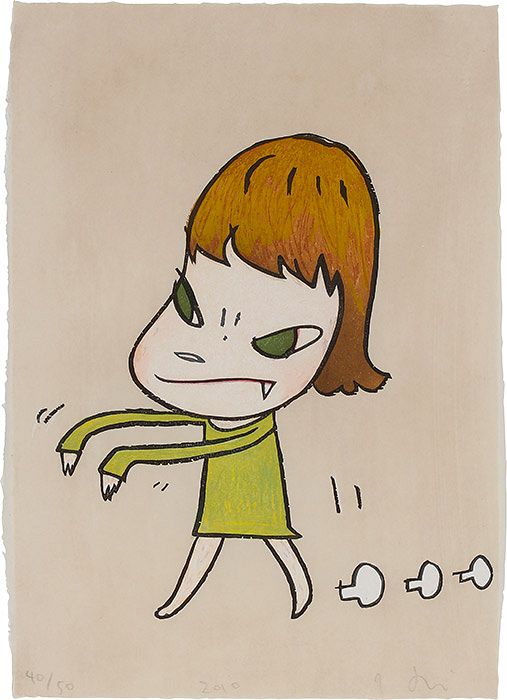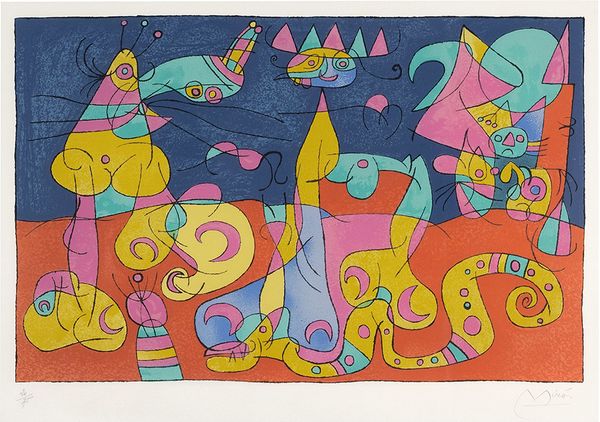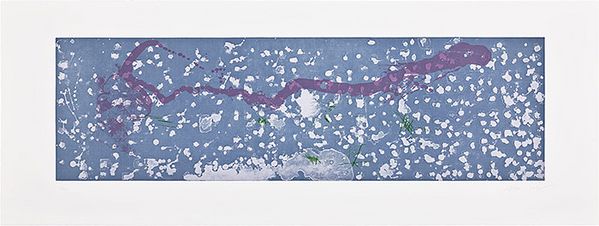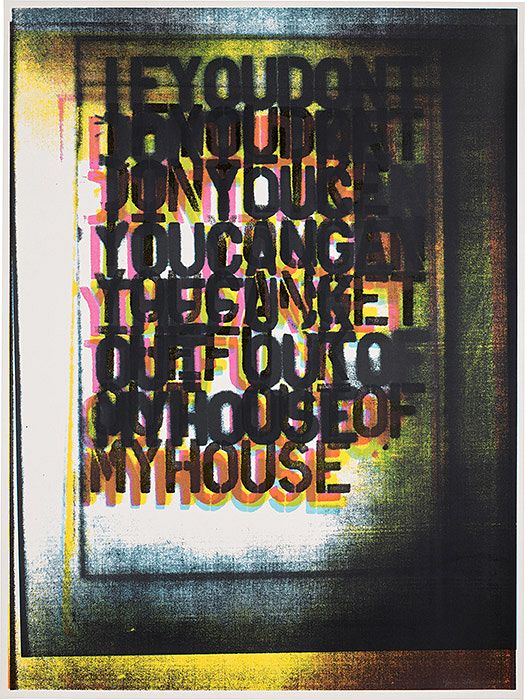Roy Lichtenstein, Red Lamp, 1992, lithograph. Editions & Works on Paper.
In the coming weeks, Phillips is offering a spectacular array of editions spread across two global sales:
Editions, Photographs and Design on 14 June in Hong Kong
Editions & Works on Paper on 27 June in New York
With this tour below through highlights of the selections on offer, we cover some of the basics for those who are new to the category.
In a Nutshell
It’s easy to fall in love with a fine art print. Once you begin to look, you will see a variety of surface details — texture, pattern, tone — that set prints apart from paintings, drawings, and mass-produced reproductions. Many well-known and emerging artists alike, whose practices include painting, sculpture, photography, and beyond, embrace printmaking as an important cornerstone of their creative output. They work with master printers to issue limited editions that are rare and original works of art. And, as a collector, it’s thrilling to know you can still access many pieces by the same artists and from the same editions celebrated in important museum collections worldwide.
Andy Warhol, Shoes, 1980, screenprint with diamond dust. Editions, Photographs and Design.
Prints Versus Multiples
“Editions” refers to a limited run of identical artworks by an artist. Many are prints. This includes etchings, drypoints, aquatints, woodcuts, lithographs, and screenprints, among others. Some editions in our auctions combine a variety of printmaking techniques or incorporate unique hand work. But, it’s important to know that not all editions are prints on paper. Multiples can come in all shapes and sizes and reflect a diverse range of artisanal fabrication techniques and materials. Some are even fully three-dimensional!
Below are two Keith Haring prints — same artist, same image, different materials. Seeing them together, we can appreciate how the artist wielded screen printing and lithography techniques using different supports to create very different effects. What kind of print it is helps to shape the character of the object. Printmaking is like that.
Left: Keith Haring, Dog, 1986, screenprint in enamel on plywood. Featured in our recent Evening & Day Editions auction in London. Right: Keith Haring, Dog, 1986–87, lithograph on paper. Featured in our upcoming Editions, Photographs and Design auction in Hong Kong.
A Print for Every Budget
Phillips aims to help our clients build collections that express their individual tastes and personalities. Prices range considerably. Well-known iconic images in good condition can achieve record prices. At Phillips in 2020, Pablo Picasso’s linocut Portrait of a Young Woman, After Cranach the Younger, 1958 sold for $728,000. And just this year, we sold Andy Warhol’s silkscreen Moonwalk (F. & S. 405), 1987 for $463,550. But there are still many exciting choices available for budgets of just a few thousand. For this reason, many see editions as a great place for new collectors just getting started. And, with interest growing, particularly among young collectors, many champion the category for its investment potential.
Decoding Edition Sizes and Catalogue Terms
Artists produce editions in limited quantities to maintain rarity. You’ll often see two numbers inscribed on an editioned piece, separated by a slash, as in a fraction. The first is the number of the piece in the sequence, followed by the quantity of pieces in the edition.
Frequently, a small number of Artist Proofs (APs) are produced in addition to the regular edition for the artist to keep. How many is usually carefully controlled and documented during production — and we include this information whenever possible in our cataloguing. Artist proofs are identical to the rest of the edition.
For those interested in understanding the nuances, there are an additional handful of terms it can be helpful to know. A Color Trial Proof — sometimes abbreviated C.T.P. or T.P. — is a print used by the artist to fine-tune color and image adjustments prior to running the edition. It is often unique. B.A.T. is an abbreviation of the French term Bon à Tirer that literally means “ready to pull” — this is the proof that the artist approves to confirm for the printer exactly how the edition should look. A Printer’s Proof is an impression for the printmakers, also identical to the regular edition. There can also be an H.C. (Hors Commerce) meanings “not to sell.” These prints — identical to the rest of the edition — are used to promote the edition or serve as replacement or insurance copies for prints that were lost or damaged.
Yoshitomo Nara, Walk On, 2010, ukiyo-e woodcut. Editions, Photographs and Design.
Yes, Prints Are Original Works of Art
In principle, every single print offered in an edition is identical to every other. That said, these are not mere copies. Every piece in an artist edition is an original work of art, as opposed to an after-the-fact reproduction. The artist edition, from its inception through to the last details of its execution, remains firmly under the control of the artist. That print in the museum and yours — yes, it’s the same print. This is the artwork as it was conceived by the artist from the outset and handmade so there can often be unique nuances if you were to look hard enough.
Joan Miró, Ubu Roi (King Ubu): plate IV, 1966, lithograph. Editions, Photographs and Design.
Why Artists Love Making Prints
Prints can be integral to an artist’s practice. A great example is Jasper Johns who uses prints to flesh out ideas before, during, and after painting. It’s amazing how many of the most exciting artists have made prints. Some are looking for new ways to explore their visions, some are inspired by phenomenal accomplishments of artists who came before — while others simply adore the craft. Then there are those eager to get their work out there or simply to keep up with demand.
Pat Steir, From the Boat: Constellation, 2002, etching and aquatint. Editions & Works on Paper.
The Importance of Printshops
A print is a collaboration between an artist and a master printer. Printmaking is a highly specialized medium. In some cases, its materials and techniques are outside artists’ usual practice. For this reason, many have relied on an elite cadre of master printmakers at professional printshops to help realize their artistic visions. Through endless experimentation and virtuoso technical finesse, these geniuses of the craft have become legends for helping to develop and refine new procedures to achieve the impossible. Such shops as Mourlot, Pace Prints, Crown Point Press, Gemini G.E.L., Tyler Graphics, and Tamarind Institute have achieved world famous status and the editions they produce are highly desirable. Many printshops have adopted the long-established custom of blind embossing their signature image in the form of a chop mark into the paper of each print they create.
The Print Publisher
An edition’s publisher is also often noted. This is the backer that commits to financially supporting the production of the works and orchestrates their creation and distribution. It can be the printshop, the artist’s studio, or print aficionados. Top tier publishers of longstanding reputation guarantee the edition’s quality and integrity. They typically choose to work with the most exciting artists of an era in anticipation of high market demand and seek to aid in furthering their visions in fresh and unexpected ways.
It All Begins with Looking
Prints are a wonderfully diverse arena that speaks to the full spectrum of Modern and Contemporary Art — and reaches all the way back to the Old Master prints of the 15th century. In the 20th century, artists like Pablo Picasso, Andy Warhol, and Roy Lichtenstein took printmaking to the heights of excitement. Those of us who love prints have come to look to them for surprising segues, tangents, and brilliant fresh avenues of thought. There are a lot of experts out there, but there’s nothing in the world like making a discovery of your own. Start looking and keep looking — and the more you see, the more you will find.
Christopher Wool, My House I, 2000, screenprint. Editions & Works on Paper.
Recommended Reading
